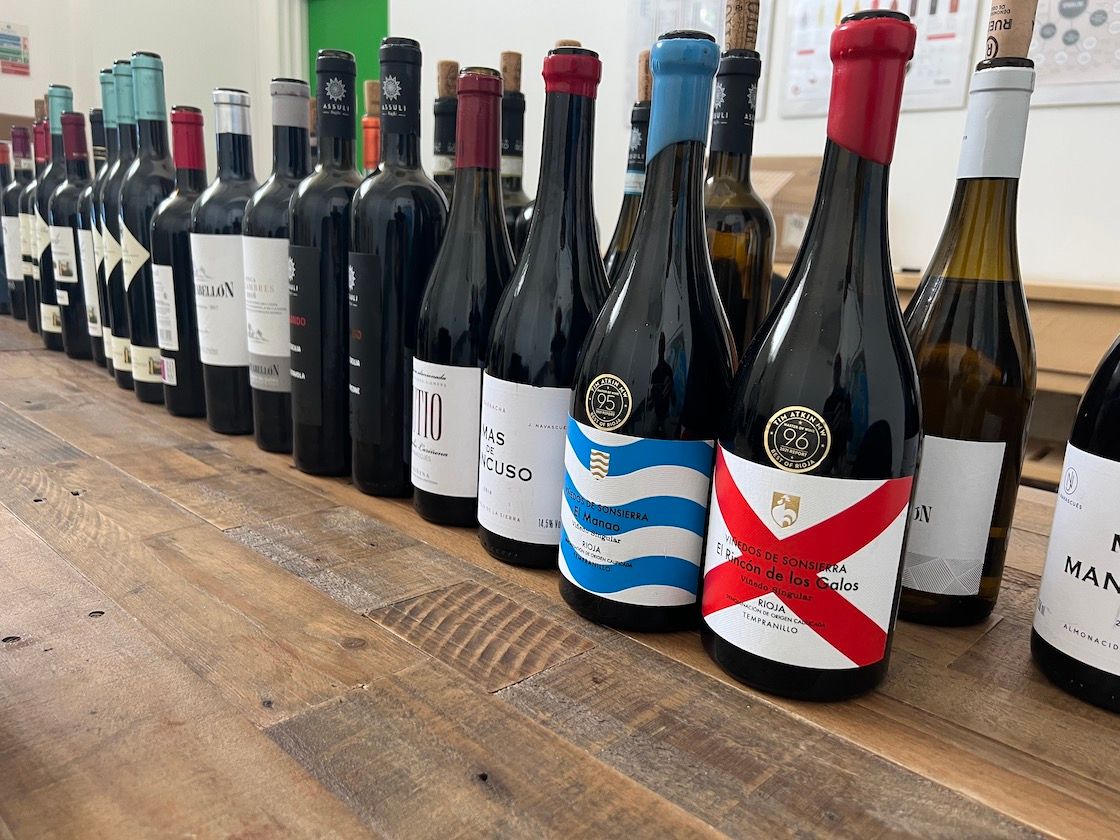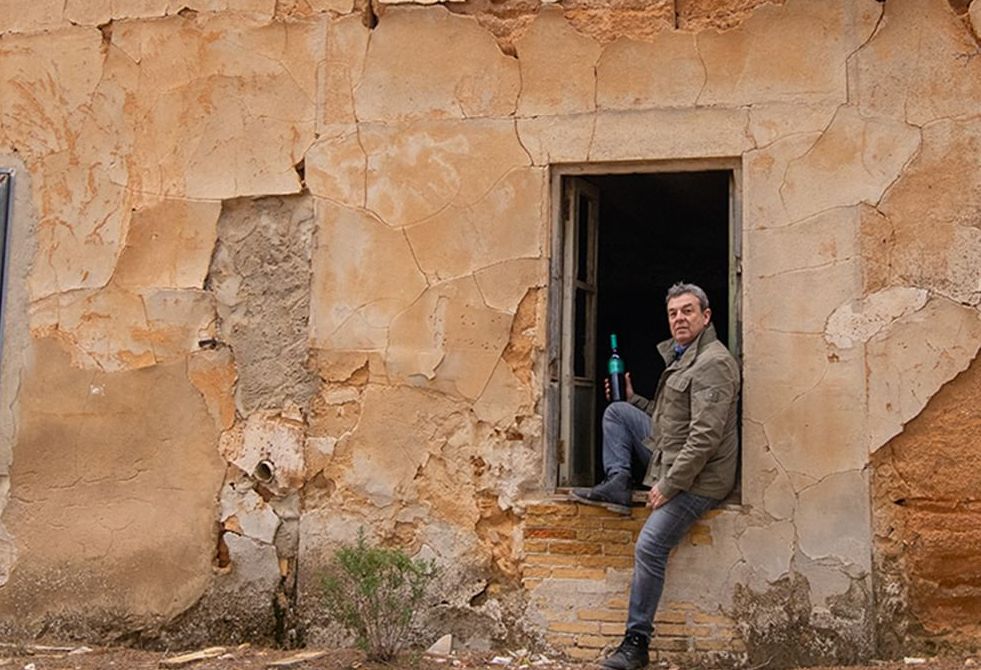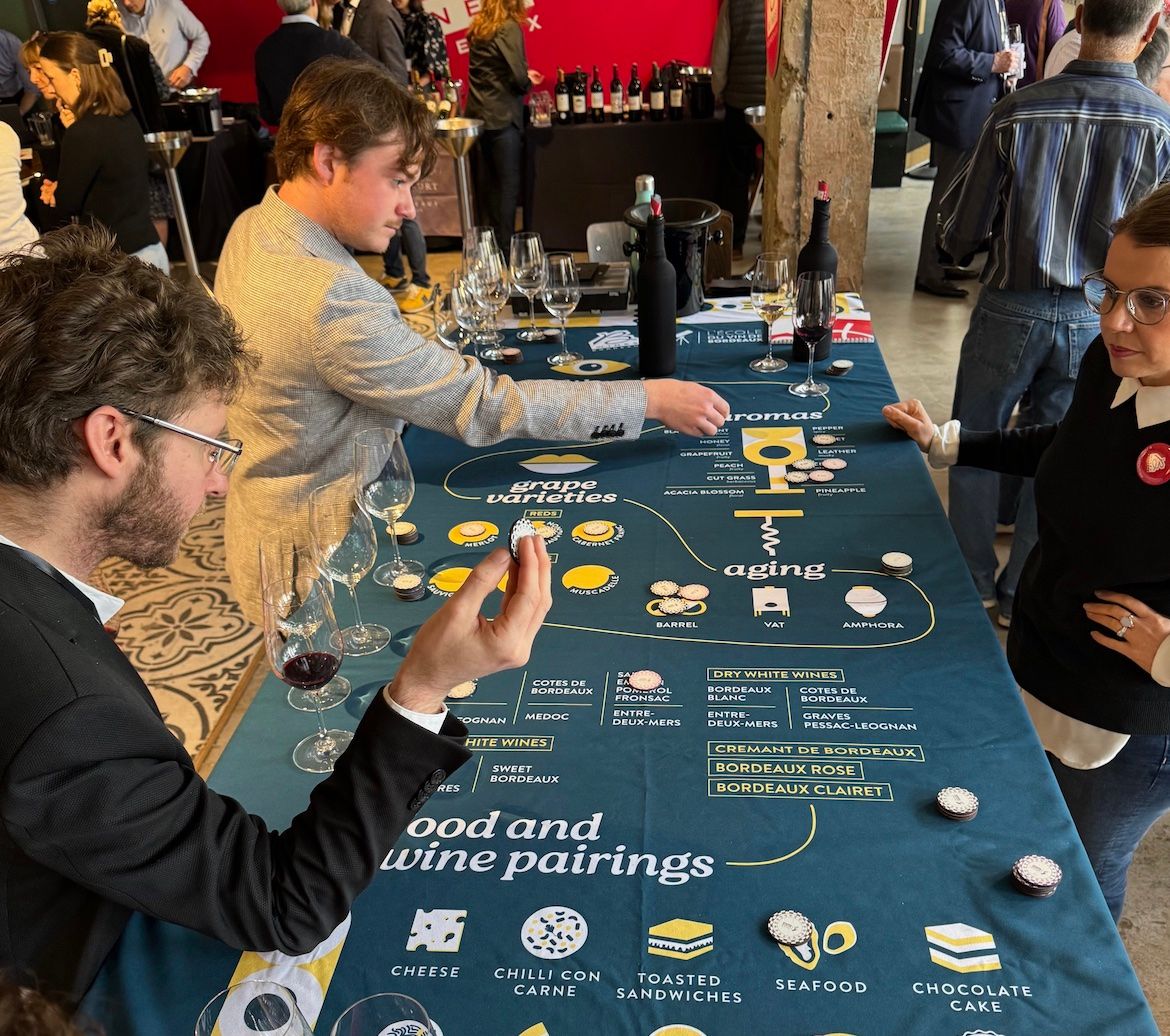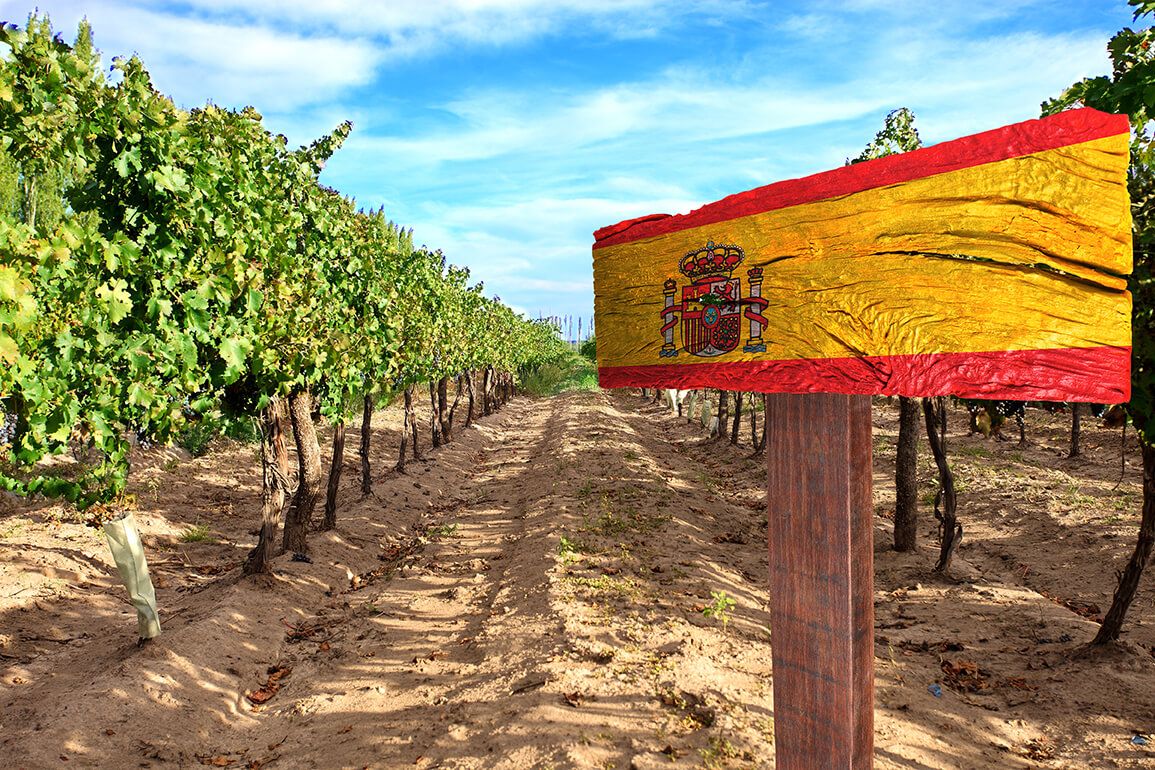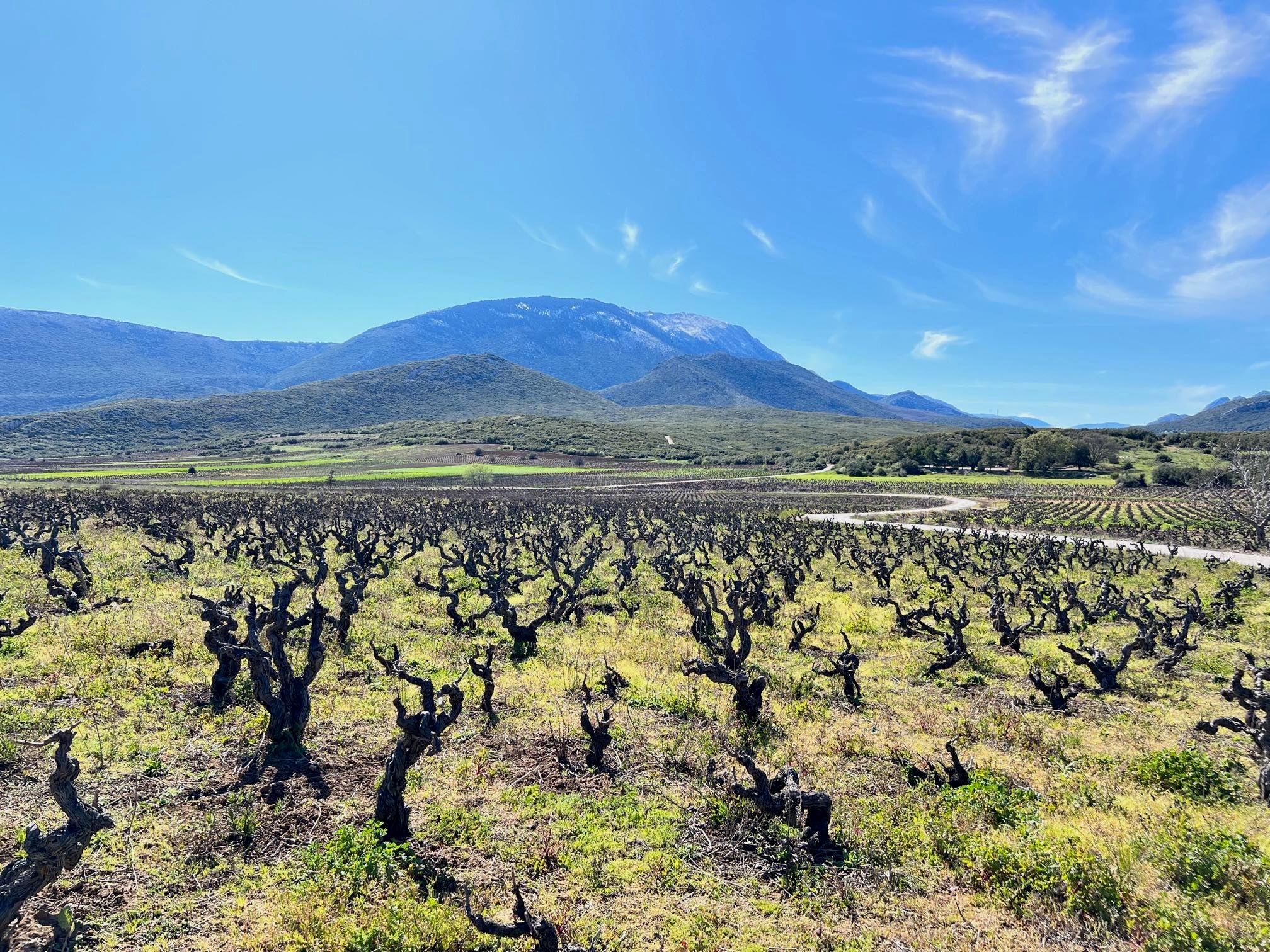“Fiano that has been barrel-aged for 12 months, then bottle-aged for 9-12 months… this is dry and serious, a more different Fiano you are unlikely to find… a real sommelier’s wine,” writes Dean about the Oi Nì 2019.
Carson & Carnevale has two reviews throughout the year, refreshing its portfolio and launching new partnerships in February and September to align with the list reviews of its on-trade customers. Wineries with provenance and genuine ‘stories to tell’ are an important factor, then there a number of criteria used to identify and select who the company works with. Now more than ever Carson & Carnevale is focussed on working in partnership with family-owned estates that offer sales opportunities across multiple channels and exceptional value for money.
Kellerei St Paul’s, Alto Adige
The South Tyrol or Alto Adige is the prime setting for this quality cooperative that has over 200 members farming 185 hectares of unique and varied terroir. Established 130 years ago, the winery benefits from the unique climate here – the warmth of the Italian sun combined with the cooling downdraft of the Alpine breezes cascading down from the Mendel range. Kellerei St Paul’s icon wine Sanctissimus comes from the oldest Pinot Bianco vineyards in the region however, in recent years, they have also received critical acclaim for their Pinot Neros too.
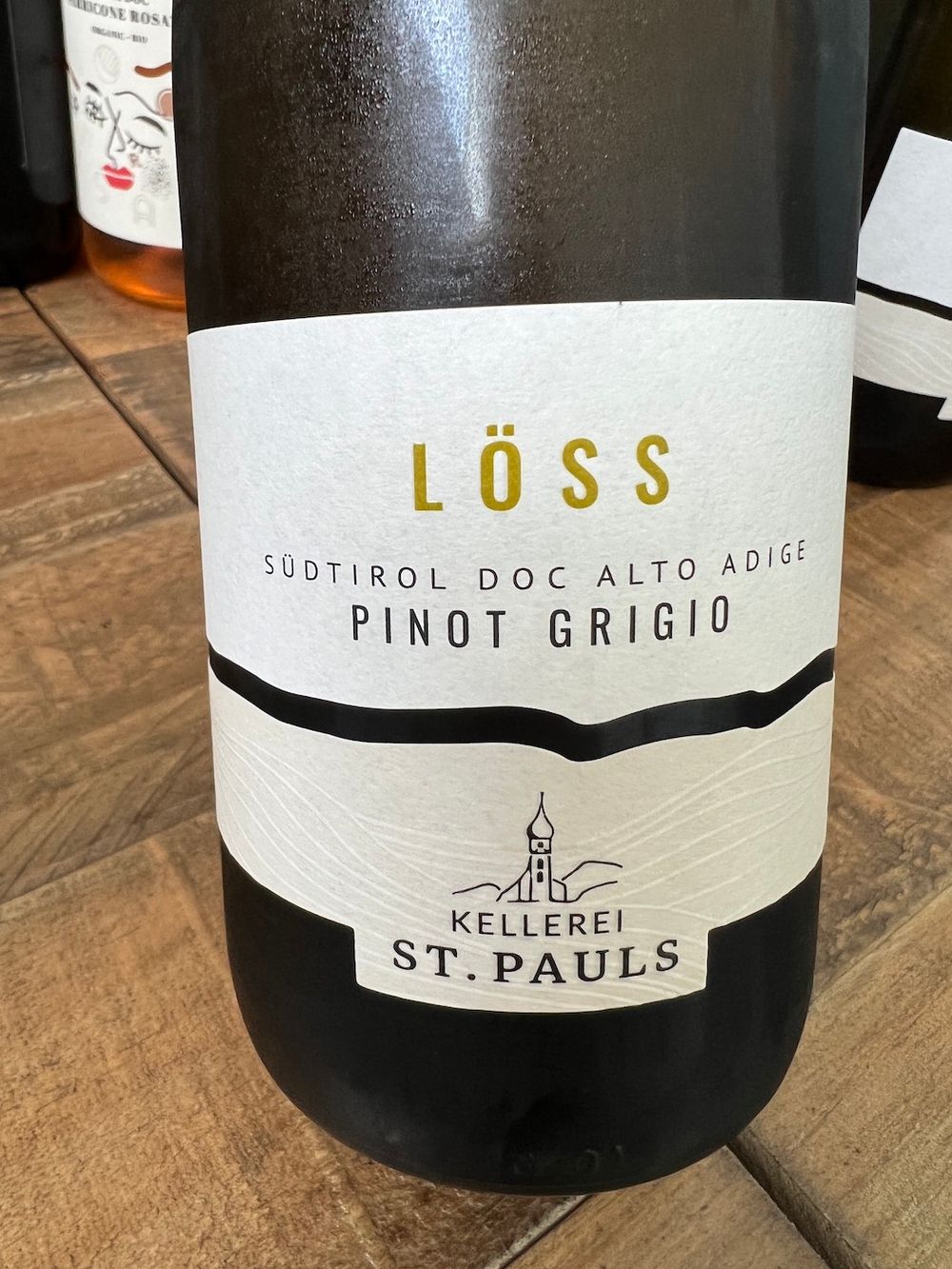
I tasted four of the five wines that C&C has from the portfolio and all are Italian classics with that Alto Adige twist: a light-to-medium weight Pinot Grigio 2020 that has bags of citrus flavour, a sense of crushed rocks, with great length and tension; a more rounded Pinot Bianco/ Weissburgunder 2020, also very gastronomic, with good depth of flavour, strong fruit profile and the same mineral quality that cleans the palate; a Pinot Nero – Blauburgunder 2020 that is semi-transparent with complex aromas of fruits of the forest, cherries, rose syrup and dried herbs with an attractive mulberry undertow that keeps the black cherry fruit in balance; and the Lehmont Pinot Nero Riserva 2018 that has an astonishing nose with such inviting aromas of cherry, fruits of the forest, cloves – intense but not overripe – on the palate it is medium weight with a lovely balance between sun-kissed fruit and a bedrock of mineral-charged acidity – the tannins are ripe and fine-grained but balanced nicely with the fruit. There’s a dry, black plum skin tartness on the finish which encourages another glass.
Start with: the Pinot Grigio and the Lehmont Pinot Nero Riserva.
Marchesi di Barolo, Piemonte
A family-owned Barolo estate with a fine line in winemaking history – five generations and the first producer of Barolo – Marchesi di Barolo is now run by the Abbona family that offers a broad selection of Piedmontese wines but specialises in single vineyard wines. It still uses its original wine cellar (established in 1806) operated today with modern winemaking techniques.
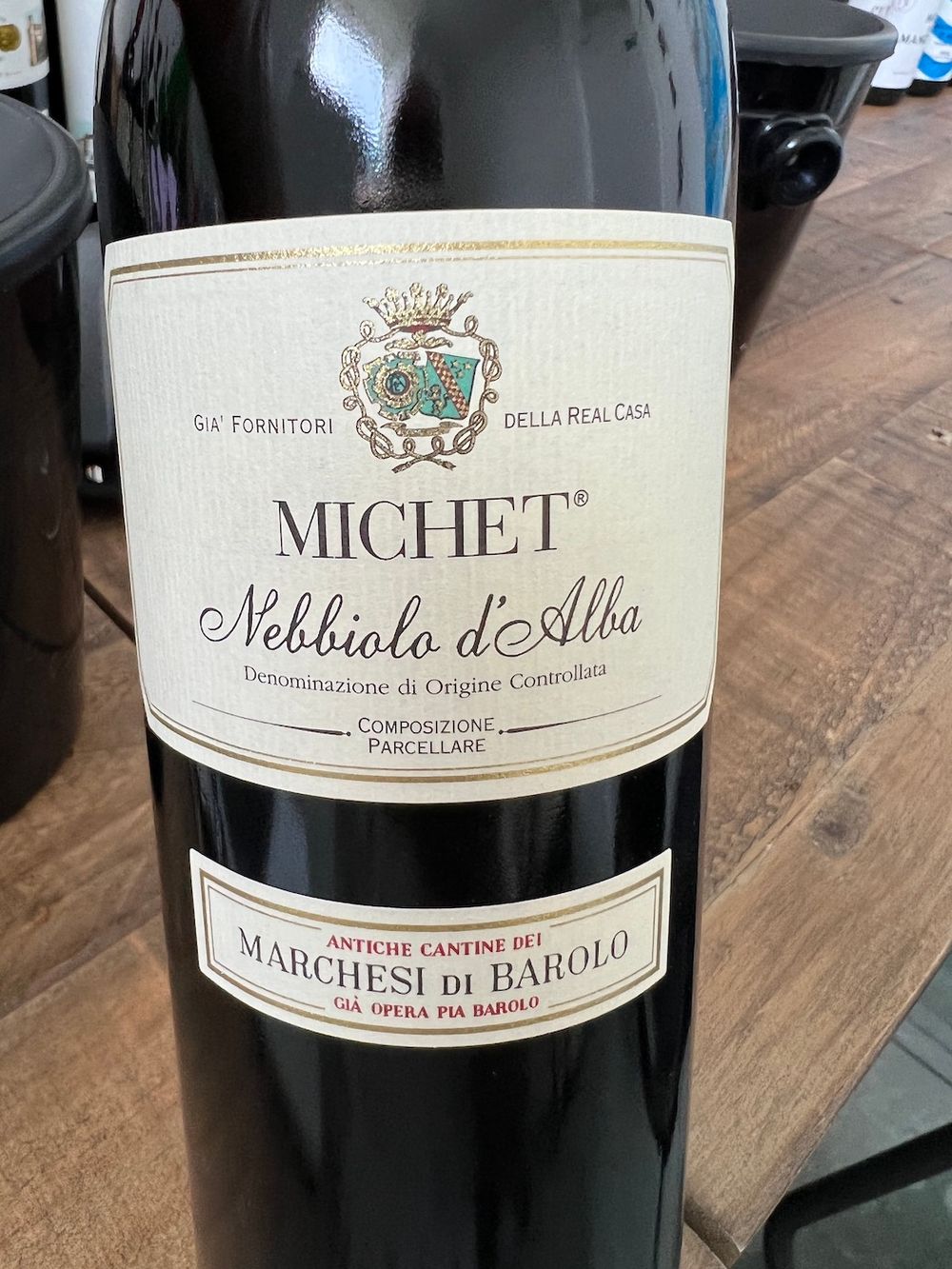
Of the 10 wines C&C has got in its portfolio there is one white, a pale, pretty Roero Arneis 2021 that has a lifted nose of crystalised fruit with a nice mix of juicy fruit on the palate and a lean, saline edge; a tasty dry Barbera d’Asti 2020 that has red and black fruit – mulberry, black raspberry – warm, with fine-grained ripe tannins, a touch of cream with a blood orange twist on the finish; the Barbera D’Alba Ruvei 2019 is warmer and smoother than the D’Asti – ripe, rounded, fine-grained velvety tannins, with a lovely bitter twist of blood orange adding freshness and balance, on the nose you find a hint of toasted hazelnut, with black fruit and vanilla pod; another Barbera, Barbera d’Alba Peiragal 2019 is ripe, rounded, soft and generous with a nice lick of tar and red licorice; the Nebbiolo d’Alba Michet 2019 is a real find, a baby Barolo that punches well above its weight. Semi-transparent, ruby-red, this has lovely, lifted aromatics of raspberry, violets, spice and red liquorice; the mouthfeel is fresh, open, dry, juicy with fine-grained ripe tannins, this will be great to pair with a variety of foods; then there are five single vineyard Barolos that all have individual characters but generally are all elegant with soft tannins, approachable and well balanced and all feature to some degree or other spices, cinnamon and traces of absinthe, tobacco and wild rose. Barolo Tradizione 2017, Barolo del Comune 2016, Barolo Coste di Rose 2016, Barolo Cannubi 2016 and Barolo Sarmassa 2016 which was my pick of the range – it has an attractive pine resin edge to this full-bodied, dry, juicy, generous and ripe award-winning Barolo from a stand-out vintage.
Start with: the Nebbiolo d’Alba Michet and the Barolo Sarmassa.
Tenuta Scuotto, Campania
Campania is an Italian region that is fast on the rise in the global wine scene, thanks to an increasing demand for wines from Southern Italy and also Campania’s use of indigenous grape varieties and ability to now make its reds more approachable in youth. This estate near Avellino has vineyards at 480m altitude which helps bring balance to the wines.
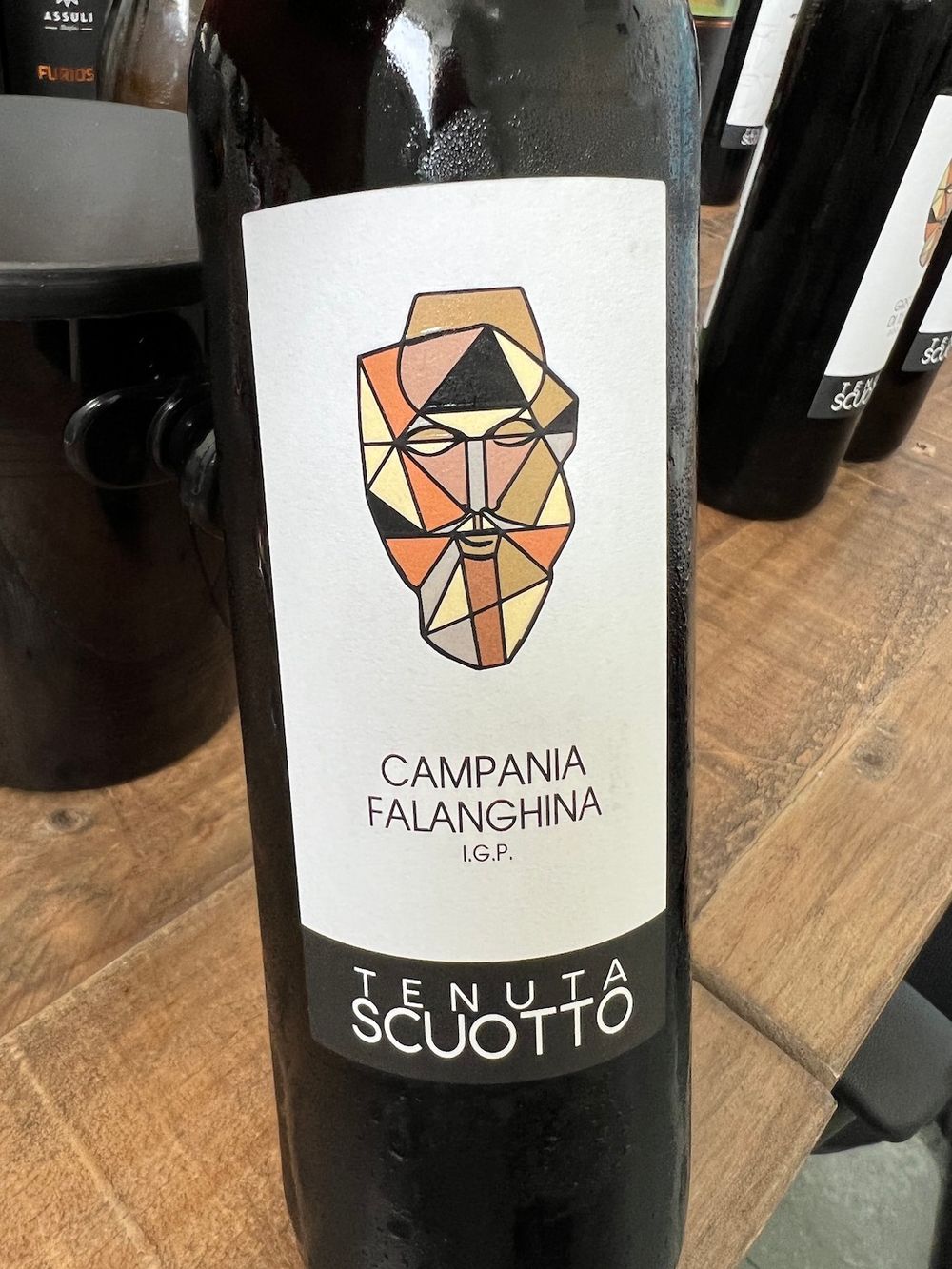
C&C has got four whites and two reds – all impressive with some real USPs. There’s a fresh, fruity Falanghina 2021 that was just delicious with lots of ripe, red apples a well-judged rounded palate, a good length abnd lots of potential; the Greco di Tufo 2021, had a very ripe nose, almost like white grape juice, intense on the palate, concentrated flavours, with breadth, depth and a dry, slightly bitter finish; there was a sweet and sour thing going on in the Fiano Di Avellino 2021, a moreish, light yellow wine which had a lovely balance – ripe, almost creamy fruit, with intense, ripe citrus; the Oi Nì 2019 is a real sommeliers’ wine – Fiano that has been barrel-aged for 12 months, then bottle-aged for 9-12 months, this wine was golden yellow, and had a complex nose with tropical fruits and yellow stone fruit, on the palate the wine is ripe, warm (14.5% abv), velvety, the wood adding a savoury edge, this is dry and serious, a more different Fiano you are unlikely to find.
The one red I tried was the Taurasi 2017 which was deep cherry red, with profound aromatics of blackberry, woodland honey, black cherries and dark chocolate. In the mouth the wine is dry, velvety, warm, with fine-grained ripe tannins adding balance. There’s a lot of concentration here but the wine is not overripe. Dry, long length, blue plum skin finish, touches of sloe. Great!
Start with: the Falanghina and the Taurasi and try to sample the unique Oi Nì
Assuli, Sicily
From the West side of Sicily in the core of the DOC Sicilia area, Assuli is a contemporary winery that focuses its 130 hectares on growing indigenous varieties and produces one of the best Perricones on the island. Winemaker Lorenzo Landi has won over 150 Tre Bicchieri awards from Gambero Rosso and makes his wines from five plots, ranging from 100m to 600m above sea level. The winery prides itself on being 100% ecologically sustainable.
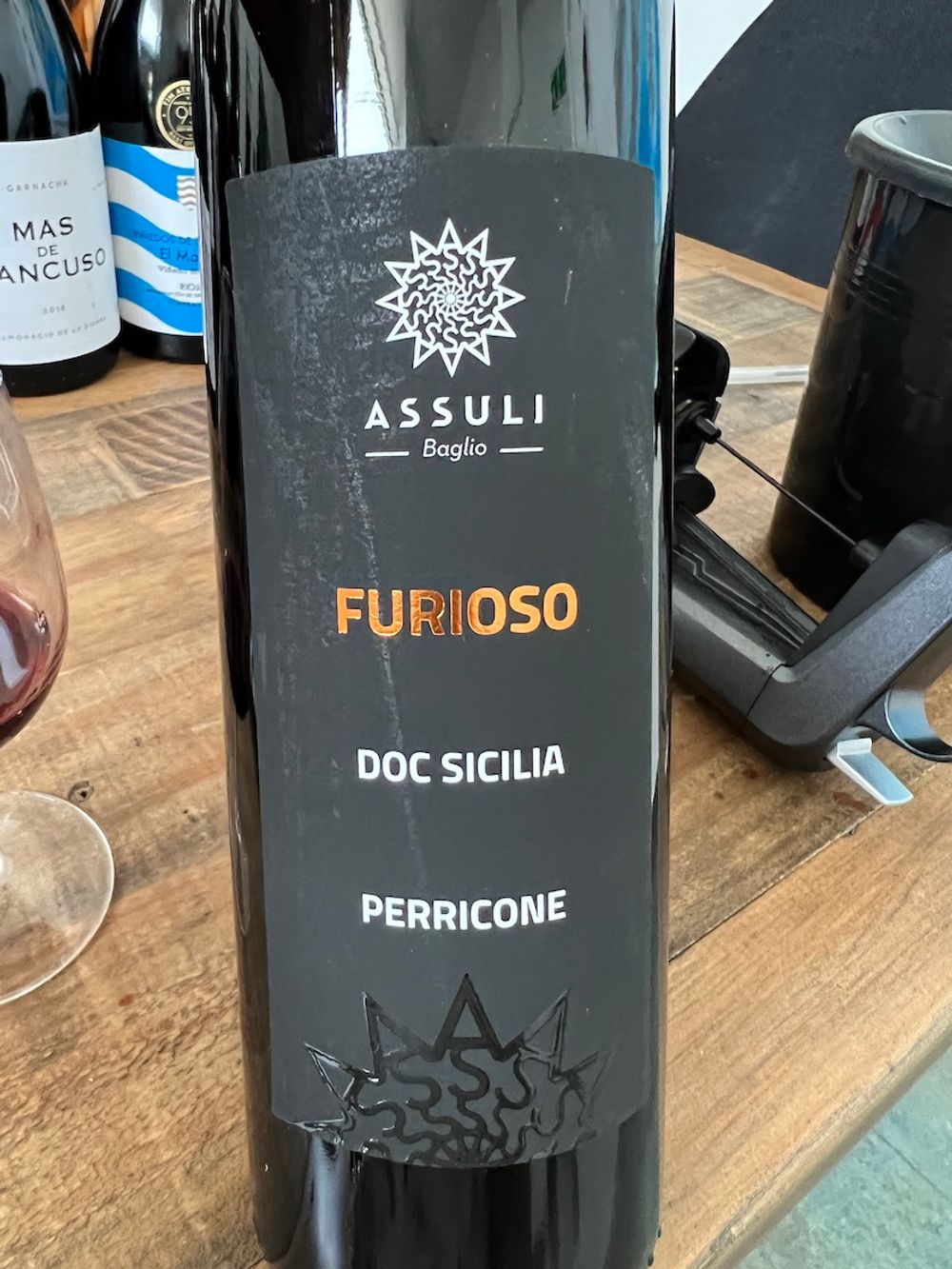
I tasted two whites, two reds and a single rosato. The Dardinello 2021 is a ‘glu-glu’ white with ripe Mediterranean stone fruit and citrus – peaches, lemon, fresh nuts – a light to medium weight in the mouth, a fine balance between ripe citrus and medium acidity, decent balance; Donna Angelica Lucido 2017 is based on another interesting grape, deep straw yellow in appearance; the aromatics are ripe, intense with white flowers, candied pear and dried apricots, in the mouth the wine is medium weight, complex, dry and savoury – a wine of power and complexity, great for food or matching by the glass; Fiordispina Perricone Rosato 2021 is peach-skin pink with an orange hue, it has a pretty, floral and fruity nose with orange blossom, cherries, and a spicy, nutty note – think cassata with a pinch of five spice. In the mouth it was nice and rounded with a balanced palate, fruity, citrus and very different.
Of the two reds the Lorlando Nero d’Avola 2018 was powerful and intense with black, sweet fruit on the nose and palate – ripe and very easy going; the Furioso Perricone 2017 is the winery’s flagship a 100% Perricone that won a Tre Bicchieri Gambero Rosso award in this vintage. The wine is elegant with red ripe fruit, graphite and violets; there were also savoury notes with balsamic, meat juices and a rustic, tannic edge which I liked.
Start with: Furioso Perricone 2017
Bodegas y Viñedos Monteabellón, Ribera del Duero
The Garcia family (of Vega Sicilia fame) are the owners of this 2002-established estate in Ribera del Duero that has a patchwork of diverse terroirs over its 130 hectares of low-yielding vineyards. Its superb value range of wines are aged in oak, the skills for which were honed at Vega Sicilia.

C&C is importing four wines – three red and a white Verdejo 2020, whose straw yellow appearance and fruity nose with tropical (banana) notes suggests a riper, broader palate. In the mouth the wine is fresh, rounded, luxurious and leaner than the nose suggests – there’s lovely acidity here which is the result of the region’s high altitude. Fresh, mineral-driven, a tannic edge with salinity and an attractive green-orange bitterness on the finish. 5 Messes, 2019 is 100% Tempranillo aged for five months in barrel (50/50 French and American oak), the wine is chock-full of black and blue fruit with intense aromas, and a smoky hearth and black earth quality; in the mouth the wine is ripe, generous, with black fruit, ripe tannins that still deliver structure and power. Fresh, ending on a very dry finish.
14 Messes, 2017 is Tempranillo aged for 14 months in oak (70% French and 30% American). This is a rich, powerful, fruit-forward wine that is nicely balanced by generous acidity. You pick up baskets of fresh black fruits, sweet cooking spices, black fruit jam, candy tobacco and wood; It is ripe, fruity, tannic and structured but not over-ripe and well balanced. Finca Matambres 2017 is a wine that critics love – a 100% Tempranillo aged for 20 months in barrel (80% French/ 20% American oak). The wine has a gorgeous dark cherry colour, aromas of black fruits, roasted nut shells, oak; in the mouth the wine is surprisingly fresh with ripe, quite forceful tannins, balsamic and liquorice notes. Impressive but needs a bit more time.
Start with: the Verdejo and 5 Messes
Navascués Enología, Aragon
This is the personal project of Jorge Navascués, one of Spain’s most highly regarded winemakers through his roles as head winemaker at Zorzal and Contino, the boutique winery owned by the CVNE group. Anything that Navascués touches is worth following and that is certainly the case here with a six-wine selection from DO Cariñena in Aragon in the North East of Spain, where he and his family are the third generation of winemakers.
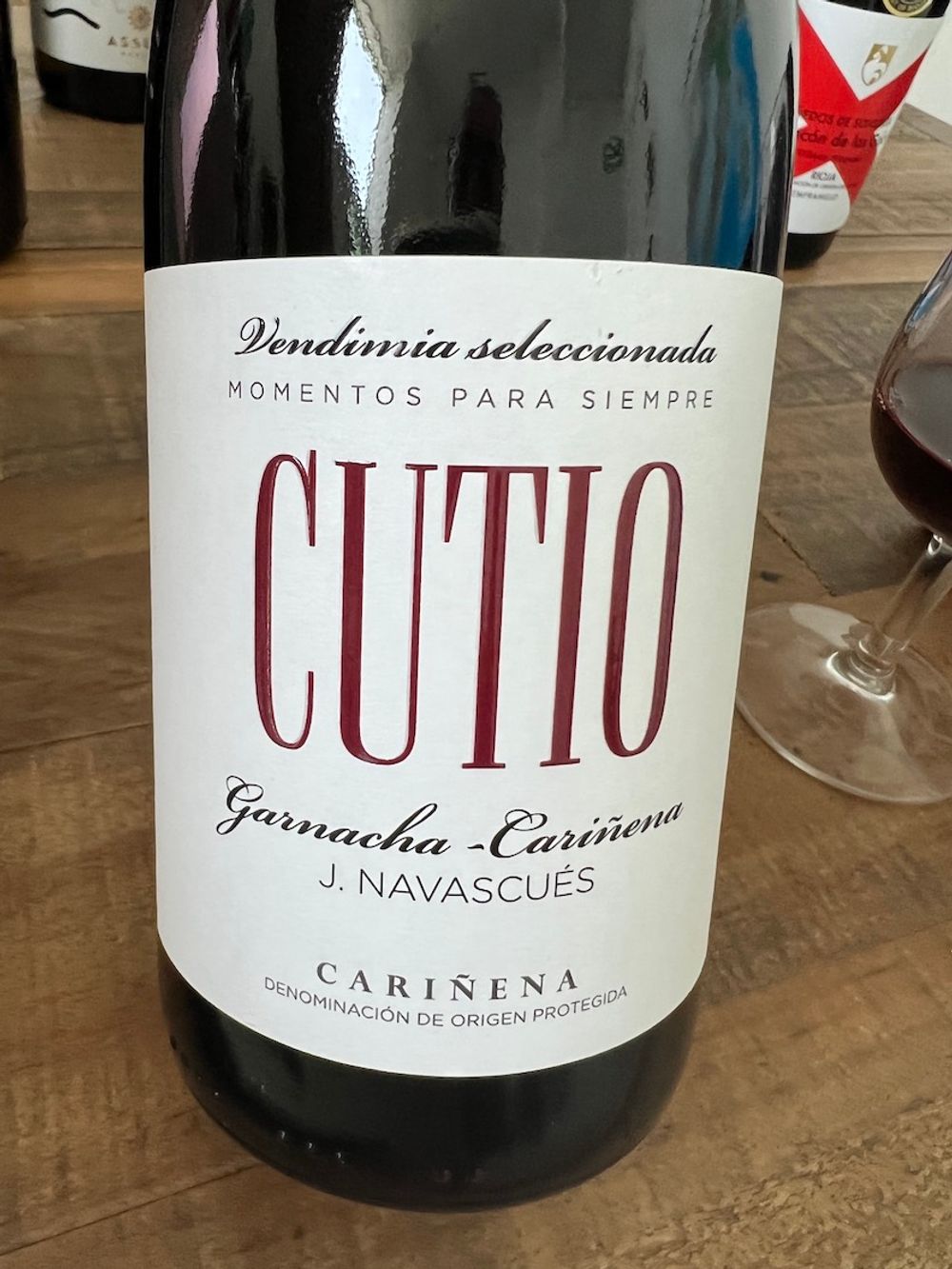
Of the three wines I tasted the Macabeo, 2019 was the only white, whose straw yellow look is the result of two days skin contact and wood ageing; the nose holds notes of fennel, citrus and orchard fruits, nuts and wild herbs. The palate is soft and creamy, textural, rounded and fruity. The wood ageing adds savoury notes and complexity. This is serious Macabeo, gastronomic with long length and heaps of potential. Cutio Garnacha do Cariñena, 2018 is 100% Garnacha with 40% aged in new barrels for four months. The nose is sumptuous with black cherries, cocoa and vanilla, in the mouth the wine is medium-bodied, ripe, soft, welcoming and velvety smooth with bags of fruit on the mid-palate. The tannins are smooth, the wine having plenty of concentration but never being over-ripe, the decent acidity giving the wine great balance. Delicious.
Mas de Mancuso Garnacha 2018 is a pet project and a highly regarded wine that is made with fruit coming from old vines (50-70 years old) and the winemaking aimed at respecting the quality of the fruit and 700m high terroir. The wine has 40% whole bunch and is aged in second and third use 5000-litre French oak barrels for 16 months. Although this packs a 14.5% abv punch, the acidity is high and the balance nigh on perfect – big, intense but beautifully-pitched. The colour is bright red, violets dominate the nose along with watermelon, black fruits, red liquorice and pepper. The palate is ripe and generous but also fresh and balanced.
Start with: Cutio Garnacha do Cariñena
Viñedos de Sonsierra, Rioja Alta
Two wines from the new Viñedos Singulares project are being brought into the UK by C&C which is some coup given the quality of the wines and the attention they have received. Viñedos de Sonsierra is an award-winning cooperative in Rioja, the sister winery of an existing C&C partner Bodegas Sonsierra (Rioja Alta) founded in 1961 with 136 grower members and over 1,500 vineyards ranging from 400-750m above sea level. When the Viñedos Singulares (single vineyard) category was introduced to accommodate the highest quality level of wine in Rioja, Viñedos de Sonsierra jumped at the chance and invested in a new state-of-the-art 2000 m2 winery dedicated to the new wines. It boasts nine of these special designation vineyards – more than any other Rioja producer.

There are only 576 bottles of El Manao 2017 on the market, so low is the yield from this 0.24 hectare gem of a vineyard. The wine is 100% Tempranillo which has fermented in steel and then left to age in new French oak for 22 months without racking. My tasting notes start with ‘Wow!’ So sensational and complex is the nose – you detect ripe black fruit, blackberry jelly, with toasted nuts, coffee and tobacco. In the mouth the wine is big, rounded with lots of concentration, the acidity and dryness keep it all in check and balanced.
The El Rincón de Los Galos 2017 comes from another unique vineyard with four times the number of bottles on the market compared to the El Manao. Both wines were made in a similar style with Los Galos having four months less ageing in new French oak. This wine is a lovely mix of real elegance and gravitas – it’s a wine that takes you on a journey as it changes in the glass. At first you pick up black fruit (blackberries), liquorice, coffee, dark chocolate and a sense of minerals, the tannins are velvety. This is a big powerful (14.5% abv), ripe and generous wine make no mistake with a juicy fresh core and a remarkably long length.
Start with: El Rincón de Los Galos
San Giusto a Rentennano, Tuscany
From the most Southerly part of the Chianti Classico, San Giusto a Rentennano is widely considered to be one of Chianti Classico’s finest artisanal producers with cult-like status with regards to their sought-after IGT and Vin Santo wines. This family-run biodiverse estate is 180 hectares large with 31 hectares planted to vine. C&C is taking five of its wines which sadly didn’t arrive in time for the tasting but will be dealt with in a future spotlight on The Buyer.
Carson & Carnevale is a supplier partner of The Buyer. To discover more about them click here.
